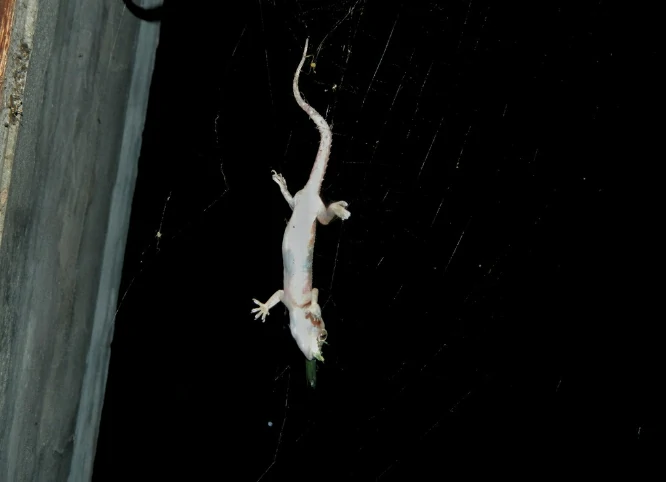You’ve probably seen this happen before. It’s late at night, your porch or balcony light is on, and when you step outside, there they are
Tiny lizards clinging to the wall, barely moving, their eyes locked on the glow. Every now and then you see a quick flick of a tongue, and an insect disappears.
It makes you wonder why they do this. Are they drawn to the light? Do they like it? Or are they waiting for something else?
Lizards aren’t actually attracted to light itself, they’re attracted to the insects that gather around it. Light sources at night, like porch bulbs or street lamps, draw in moths, flies, and other bugs, and the lizards show up to hunt them. The light is basically a buffet for insect-eating lizards.
It might look like they love the glow, but really, they’re just there for dinner. Once the bugs show up, the lizards know it’s time to eat.
The Real Reason Lizards Hang Around Lights
When you turn on an outdoor light at night, it pulls in insects like moths, beetles, mosquitoes, and tiny flies. Scientists think many flying insects get confused by artificial light because it messes with how they use moonlight and starlight to guide their movement.
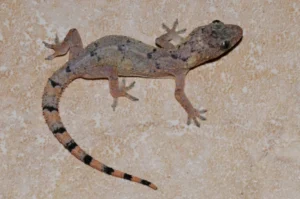
To a lizard, this is great. They don’t need to search for food across the yard. The light brings everything to one easy spot.
It works like how people go to a restaurant instead of hunting for food. The light acts like a simple food stop. The lizard just waits and eats whatever shows up.
So even though it looks like the lizard is drawn to the bulb, it’s actually following its prey.
How Lizards Hunt Around Lights
If you watch closely, you’ll notice how calm and patient lizards are when they sit near a light. They stay still, usually pressed against the wall, watching for the slightest movement.
When a moth or fly gets close, the lizard strikes in an instant. Their quick bites and sticky tongues help them grab prey before the insect even knows what happened.
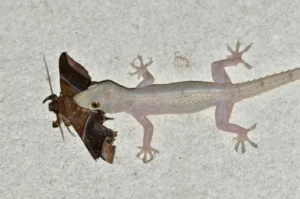
House geckos are the best example of this. In warm places, they show up near lights almost every night. Their eyes are built for low light, which makes them great nighttime hunters.
They barely move because they don’t need to. The light brings the insects right to them.
Lizards Don’t See Light the Same Way We Do
It’s easy to think lizards enjoy the brightness, but that’s not what’s happening. Lizards see the world differently.
Their eyes are built to pick up movement, not brightness. Some species can even see ultraviolet light, which helps them spot insects in dim areas.
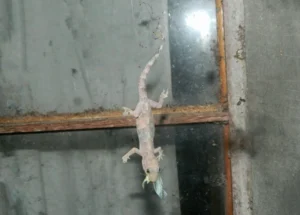
So when a lizard sits near a light, it’s not admiring it. The light helps them see insects more clearly. It lights up the wall and the air around them, making hunting simple.
They aren’t drawn to the light. They’re drawn to the chance to catch food without working too hard.
Lizards Gathering Around Lights Nightly Routine in Warm Places
If you live somewhere warm, especially in tropical areas, you’ve probably seen these lizards around your porch lights almost every night.
Many small lizards, like house geckos and anoles, are most active at night or around dusk.
When the sun sets and the air cools a little, they wake up and start looking for food. Once they figure out that lights attract insects, they return to the same spot night after night.
It’s like how a cat remembers where the food bowl is. The lizard learns that the light means insects, and insects mean food.
Does the Warmth From the Light Matter?
Sometimes the warmth from a light can add a small bonus. Older bulbs, like incandescent ones, give off heat. Since lizards depend on their surroundings to control their body temperature, the warmth can feel nice.
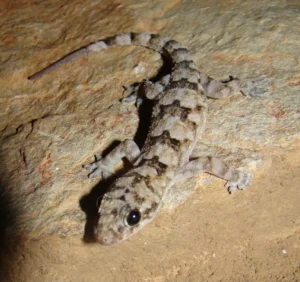
But this isn’t the main reason they show up. You’ll still see them around cooler LED lights. That’s a clear sign they’re really after insects, not warmth.
If the warmth is there, it’s just a small extra comfort while they hunt.
Why You See More Lizards in Certain Seasons
You’ll notice heavier lizard activity during warm months when insects are everywhere.
In spring and summer, bugs gather around lights in huge numbers, and lizards take advantage of the easy food.
Once the weather cools and insects slow down, you’ll see fewer lizards.
Their whole pattern follows the food. When bugs are active, lizards are active.
Common Lizards You’ll See Around Lights
The lizards you see around porch lights are usually house geckos. The most common species include:
- Mediterranean house gecko (Hemidactylus turcicus)
- Asian house gecko (Hemidactylus frenatus)
These little lizards have pale, soft-looking skin and big eyes that shine in the light. They climb walls and ceilings with ease because of tiny hair-like structures on their toes called setae, which help them stick to smooth surfaces.
Other lizards like anoles or small skinks might use lights too, but geckos are the true experts.
If you live in a warm region, the lizards you see at night near lights are almost always geckos.
Are Lights Dangerous for Lizards?
Lizards can benefit from artificial lights, but it’s not perfect. Bright lights can change how insects behave, and that affects the lizards too.
For example:
- Bright lights can make lizards easier for predators like cats, snakes, or birds to spot.
- Relying too much on bug-filled lights can keep them from hunting naturally elsewhere.
- Too much light can mess with their natural rest patterns.
Even with these issues, most house lizards handle it well. They’ve become very good at living around people, and they thrive in areas with lots of lights and insects.
How Artificial Light Changed Lizard Behavior
Before humans used electric lights, lizards hunted in the dark with only moonlight to help them. But once lights became common, lizards learned to use them.
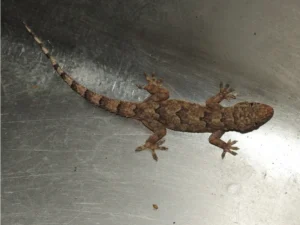
This is a type of behavioral adaptation. They didn’t change their bodies. They just changed how they behave.
It’s like how pigeons learned to live in cities or how raccoons figured out how to open trash cans. Lizards saw an easier way to hunt and took advantage of it.
For an animal with a tiny brain, this is pretty clever.
Why Insects Go to Lights in the First Place
To understand lizards, you have to understand their food.
Many flying insects use natural light to guide their direction. They follow the moon or keep a steady angle to it so they can fly straight.
Artificial lights confuse them. When they try to keep the same angle to the bulb, they get stuck circling it.
That’s why moths spin around lamps. They aren’t doing it on purpose. They’re lost.
Lizards simply use this confusion to their advantage.
Should You Worry About Lizards Around Your Lights?
There’s no reason to worry if you see lizards hanging around your porch lights. They’re harmless, and they don’t damage your home.
In fact, they help control insects. They eat mosquitoes, flies, tiny beetles, and moths. So having a few lizards on your wall is actually useful.
The only thing you might notice is a few small droppings near your light fixtures, but that’s easy to clean.
How to Watch This in Action
If you want to see this behavior up close, turn on your outdoor light after sunset and wait quietly.
Within about 15 to 30 minutes, you’ll probably spot a small gecko or lizard appear. Watch how it stays still, waiting for movement. When a bug flies close, it moves so fast you might miss the strike.
It’s a small little show happening right on your wall.
Once you know what’s really going on, it’s pretty fun to watch.
What Happens When the Lights Go Off?
When you turn the light off, the insects leave, and the lizards leave too. Without food, they have no reason to stay.
Some lizards might hang around for a moment in case the light comes back on, but most move on to another spot where insects are still active.
If you keep your lights on often, they’ll remember the place and come back every night.
Food patterns are something lizards learn very quickly.
Conclusion
So why are lizards attracted to light? They’re not really after the light. They’re after the insects the light attracts. To a hungry lizard, a porch bulb works like a simple dinner signal.
The light brings the bugs. The bugs bring the lizards. Before long, your porch turns into a tiny nighttime ecosystem.
Next time you see a gecko frozen near your wall lamp, you’ll know what it’s really doing. It’s not staring at the glow. It’s waiting for its next snack to fly past.
Hi, my name is Ezra Mushala, i have been interested animals all my life. I am the main author and editor here at snakeinformer.com.

